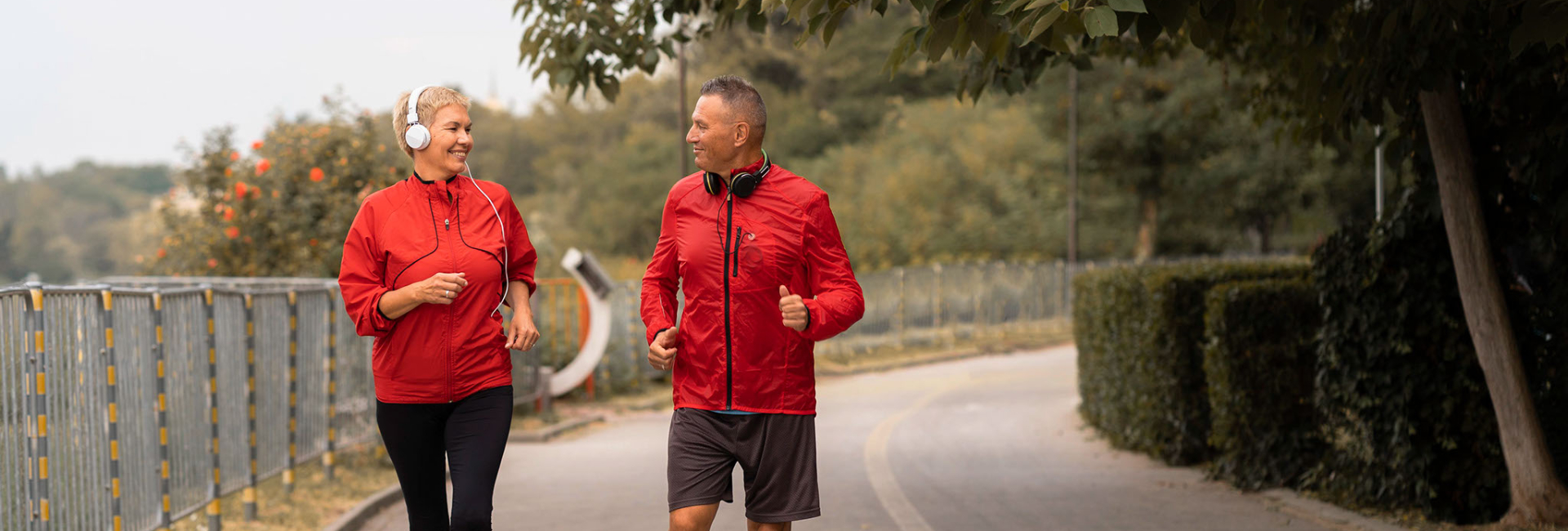The benefits of walking
Walking and running are excellent ways to build fitness and promote good health.
Walking is an optimal choice for people who are new to exercising or resuming a more active lifestyle after a particularly sedentary period. Walking is low impact, producing less shock to the joints, making it an accessible option for those with knee, ankle and/or back problems.
Walking can help individuals prevent or manage things such as type 2 diabetes, high blood pressure, heart disease and depression. It’s a great way to lose body fat, improve cardiovascular health, build muscle, strengthen bones and increase energy and endurance.
However, despite the relative safety of walking for exercise, injuries can still occur. Four of the most common causes for injuries from walking include:
Fortunately, most of these are easily preventable.
Traumatic injury
Many people have experienced the pain of a sprained ankle. Ankle sprains are a common injury and are more likely to occur when walking over uneven ground. An ankle sprain occurs when the ligaments on the inside, or more commonly the outside, of the ankle get stretched beyond normal capacity.
The risk of re-spraining an ankle is significantly higher in the first two years after an initial sprain, but there are some things you can do to reduce your risk.
Wearing proper shoes can reduce the risk of a misstep that leads to an ankle sprain or other traumatic injury, but the best form of prevention is to stay away from trouble in the first place.
If your balance is less than perfect, not only should you add exercises to your routine that can improve your balance, but you should avoid walking in unfamiliar areas when the light is poor.
Places such as indoor shopping malls are excellent places for someone just starting a walking fitness program. I recommend going in the morning as there are usually fewer people there.
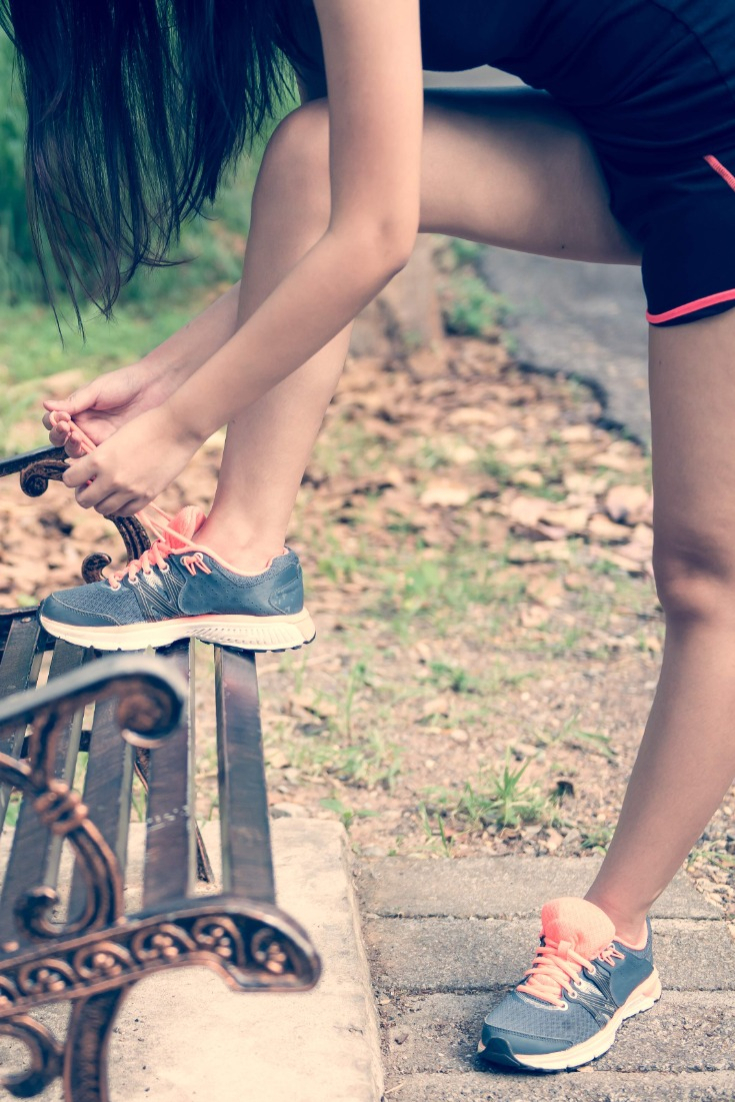
Ankles are not the only body part susceptible to injury. Though more common in running and jumping activities, Achilles tendon pain can occur after long or challenging walks and should not be ignored. If you have pain under your kneecap, it may be patellofemoral pain syndrome. Another common complaint among those new to walking and running is shin splints.
Ultimately, injury prevention is key for anyone just starting out on a fitness program.
Improper shoes
Not every foot is the same, so not every sports shoe is right for everyone. Wearing the right shoe for your foot and replacing your shoes at the proper intervals are some of the best and easiest ways to keep your feet injury free. Additionally, shoes are designed for specific activities, so choosing one that is made not just for your foot type, but also for walking or running will give you the best support as you pursue your walking goals.
Physical therapists can help you assess your foot type and determine if the shoes you walk or run in are right for your feet. If your feet ache after an outing, you lose toenails or end up with blisters, or you develop plantar fasciitis or other conditions, your shoes may not be giving you the support you need.
Lack of strength and flexibility
The foot and ankle have a difficult job to do. They must absorb shock from walking, balance the weight of your body, and propel you forward. All this happens very quickly, thousands of times a day. With all that demand, it’s important to focus some effort on the strength and mobility of our feet and ankles, but ensuring we avoid injury doesn’t stop there.
Strong hips equal healthy feet.
The muscles of the feet and ankles cannot do everything alone. A successful walking and running program requires good strength and endurance of the muscles around the hip. Known as the gluteal muscles (or buttocks), these are the largest muscles in the body. When you stand on one leg, it is largely the gluteal muscles that keep you from falling over.
An excellent exercise to strengthen these muscles is a lunge.
- In a split stance, legs shoulder width apart, head up, back straight, bend both legs simultaneously, lowering your body until the forward thigh is parallel to the floor and the back knee is a couple of inches from the floor. Focus on keeping hips level and core tight. Keep the front knee lined up over the big toe of the front foot during the movement. Push back to starting position, focusing your weight on the heel of the front foot. Repeat for 10 reps and then switch sides.
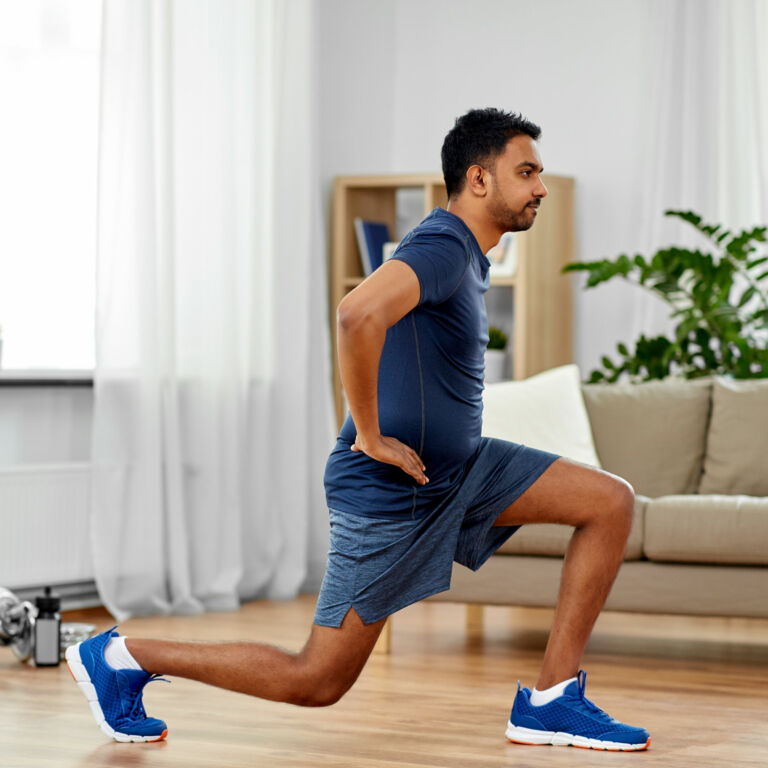
The glute muscles can be hard to wake up, but incorporating lunges and other hip and glute moves into your routine is a surefire way to avoid injury while walking or running.
Flexible calf muscles equal happy feet.
When you walk and run, the calf muscles must perform the action of absorbing shock and pushing your body forward. Without proper stretching, these muscles will become inflexible, which will cause the heel cord to become tight. This can lead to painful inflammatory conditions such as plantar fasciitis and tendonitis – a common cause of heel pain.
Calf stretches are simple and can be done to reduce pain, tightness and instability while also reducing the risk of injury.
Try a standing gastrocnemius stretch.
- Stand facing a wall with one foot back, leg straight, forward leg bent. Keeping your back straight and heels on the floor, lunge forward as you lean into the wall until a stretch is felt in the calf of the back leg. Stretches should be held to the point where mild discomfort is felt, but no pain. Hold for 30 seconds and then release. Do 3 reps and then switch sides.
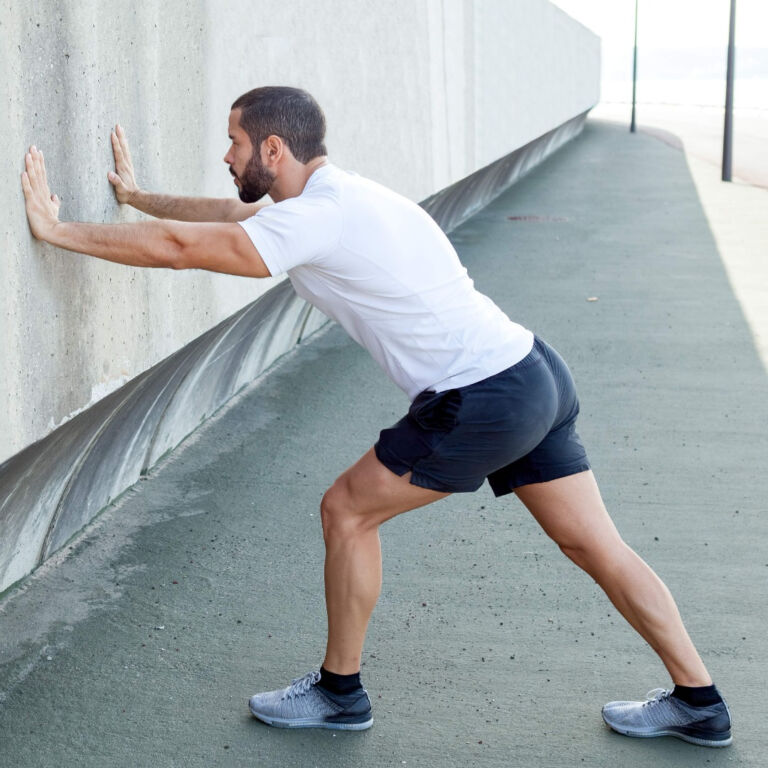
Follow with a standing soleus stretch.
- Stand facing a wall with one foot back, both knees bent. Keeping heels on the floor, keep your back straight as you lean into the wall until stretch is felt in lower calf of the back leg. Remember, mild discomfort is okay but if you feel pain, back off slightly. Hold for 30 seconds and then release. Do 3 reps and then repeat on other side.
All of these stretches should be done following every walk or run to avoid calf muscles pain and soleus pain. Even on rest days, calf stretches should be done – don’t forget to include a short, dynamic warm-up first.
Training errors
When it comes to exercise, there is a lot to be said for taking baby steps. Most training errors come from doing too much too fast.
If you are just starting a walking exercise program, it is best to start slow. Pick a distance you have walked in the past (for example, a few blocks around your neighborhood or office). Keep walking this distance for a week.
You may get some muscle soreness in your legs the first couple of days or a week, as your body is experiencing new stresses. While this stress can cause delayed onset muscle soreness (DOMS), it is also what helps muscles grow and adapt.
After the first week, add another block. Keep adding one block per week until you reach your desired distance. Ensuring the proper progression helps you prevent injuries and opens up more opportunities for walking longer distances across more diverse terrain, or for transitioning to jogging and eventually running … if that’s your goal.
Starting a running program can be a challenge if you have never run before. When it comes to how to start running, I recommend starting with a walk-to-run progression. Select a distance you wish to be able to run — 2 miles, for example. Start off using a 4:1 ratio. Walk for 4 minutes and run for 1 minute. Do this program three days a week for one week. At week two, increase the time running by one minute. The progression should look like this:
- Week One: 4 minutes walking, 1 minute running.
- Week Two: 3 minutes walking, 2 minutes running.
- Week Three: 2 minutes walking, 3 minutes running.
- Week Four: 1 minute walking, 4 minutes running.
- Week Five: Continuous running.
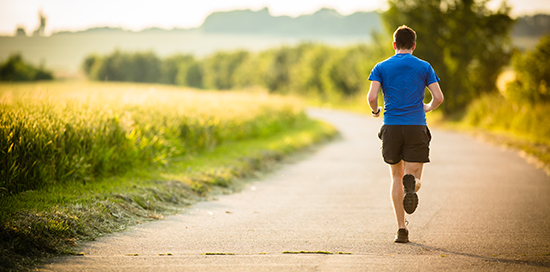
At this time, you can gradually increase your mileage and then your intensity and eventually, your speed. Running for beginners includes some precautions, such as following the 10 laws of preventing running injuries and including exercises to avoid running injuries. Be sure to focus on stretching for runners, and strength training for runners.
If you do opt to build up from walking to running, remember running requires stability, strength, power, and a proper amount of mobility. A training program that addresses each of these areas will allow you to run faster, longer, and with less pain.
Remember, running is not for everyone and walking is an excellent way to start a new chapter in fitness and lifelong wellness.
If you’re not aspiring to become a runner, but want to take your walking to new heights, hiking can be an excellent way to get exercise while exploring nature. When you’re ready to hit the trail, consider exercises that lay a great foundation for the hiking season and then choose from our list of 12 favorite Pacific Northwest hikes.

Your physical therapy partner.
If you’re still unsure about how to get started, a physical therapist can help. As movement experts, PTs have the education and experience to assess your condition and will work with you to create a customized plan to get you to your goals as quickly and safely as possible.
